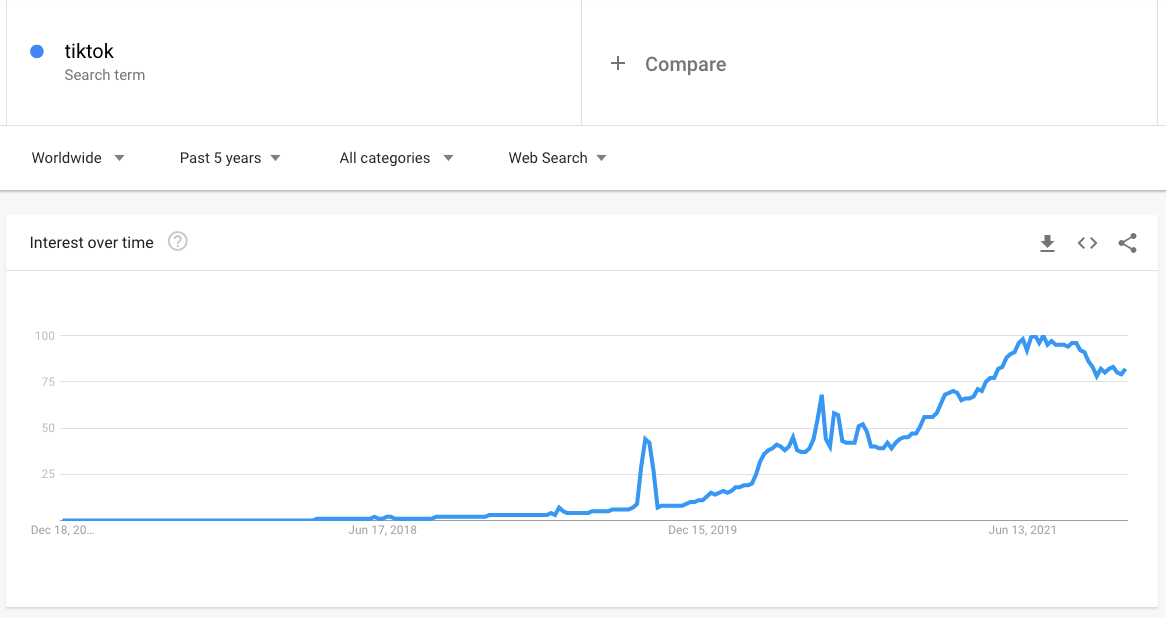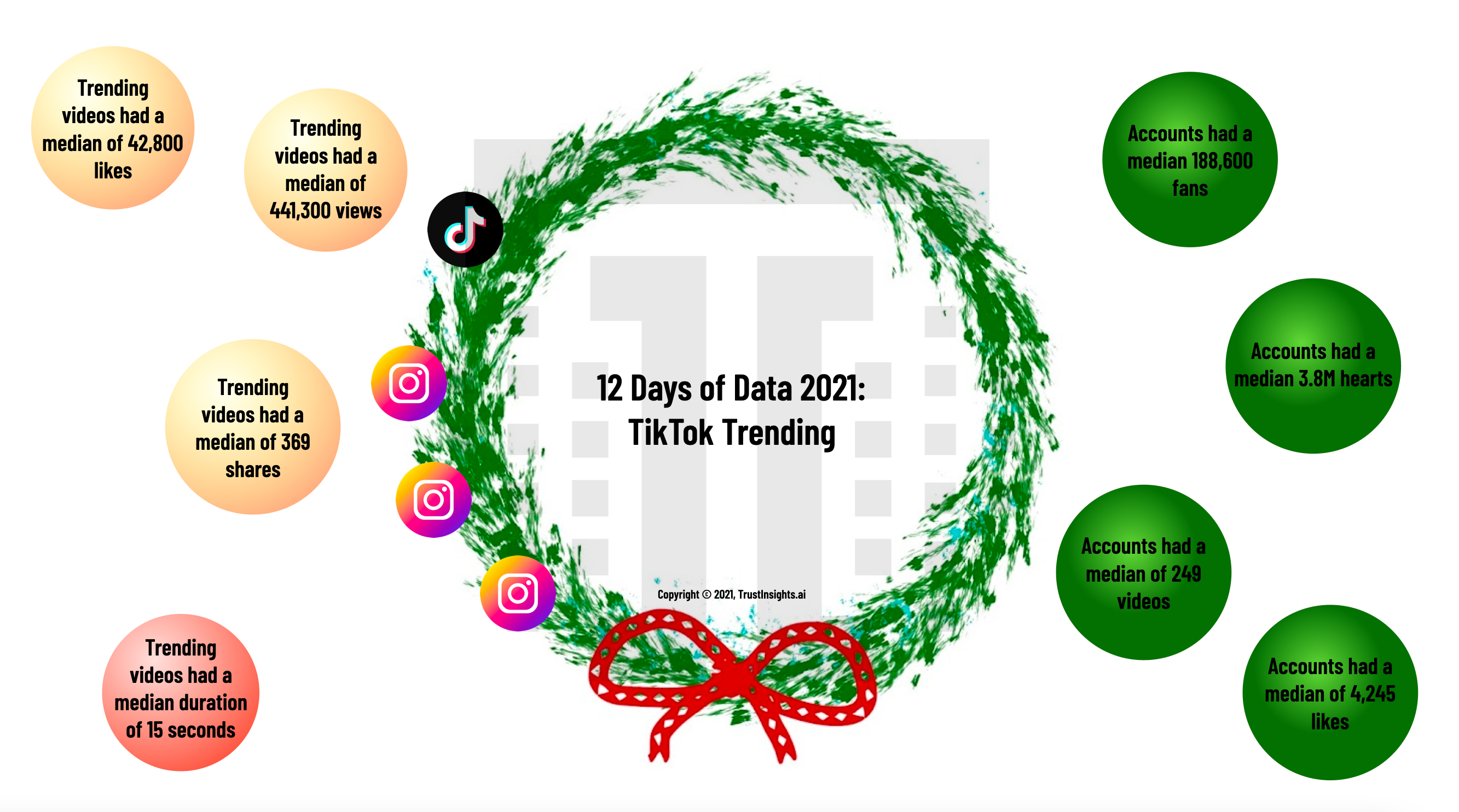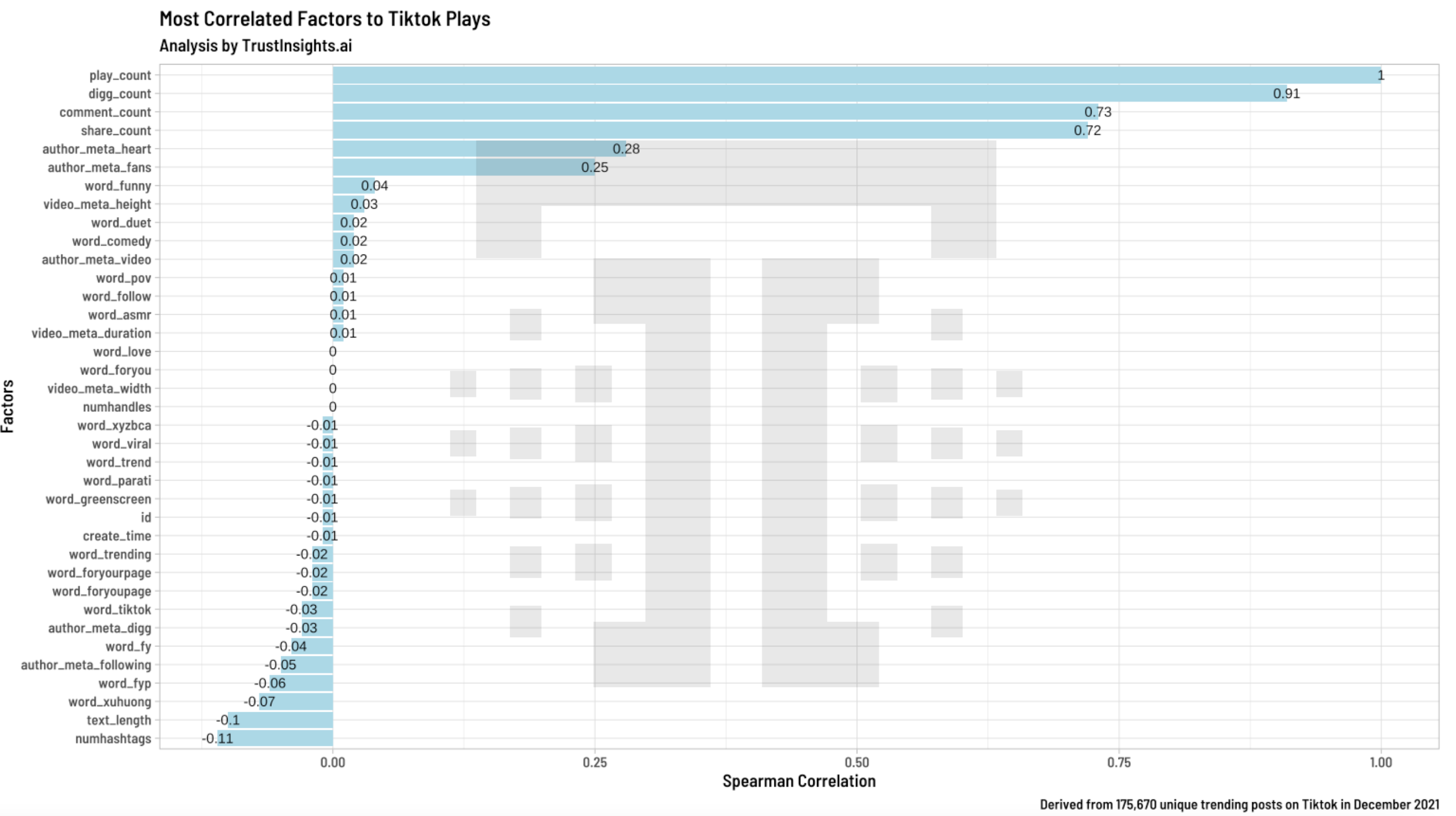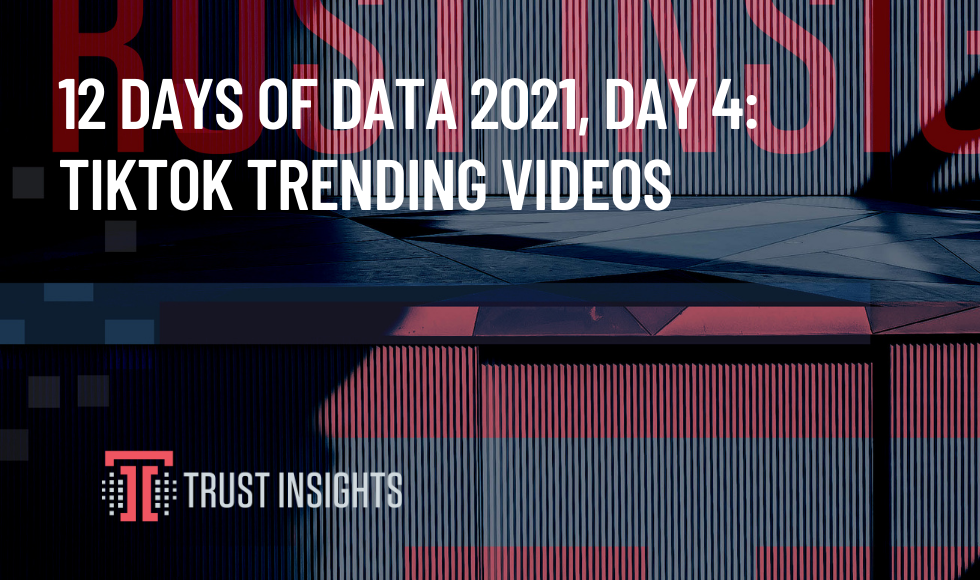Introduction
Welcome to the 12 Days of Data 2021 Edition, our look back at the data that made marketing in 2021. We’re looking at the year that was (and oh, what a year it was… again…) from an analytics perspective to see what insights we can take into the next year. Sit up, get your coffee ready, and let’s celebrate some data and look forward to the year ahead.
TikTok Trending
TikTok, the short-form video platform that stormed the world in 2020 and has been on a tear ever since. We’ve seen search traffic about the app steadily on the rise over the years:

However, many marketers struggled to understand what TikTok even was, much less how to use it for any kind of marketing. TikTok is well known for its selection algorithm, designed to keep people watching. Let’s see if we can decode it at all.
First, for the average video that is recommended in TikTok’s trending section of the app, what do the basic numbers look like?

Above, we see:
- TikTok trending videos had a median of 42,800 likes
- TikTok trending videos had a median of 441,300 views
- TikTok trending videos had a median of 369 shares
- TikTok trending videos had a median of 15 second durations
- TikTok trending video accounts had a median of 188,600 fans
- TikTok trending video accounts had a median of 3.8 million hearts
- TikTok trending video accounts had a median of 249 videos on their accounts
- TikTok trending video accounts had a median of 4,245 likes
In addition, we saw a few other useful statistics about trending videos:
- TikTok trending videos had a median of 406 comments
- TikTok trending videos had a median of 3 hashtags
- TikTok trending videos had a median of 61 characters in their captions
Clearly, TikTok prefers popular accounts to feature in trending videos; these numbers are all very large, for the most part.
And the top trending video in this time period?
Now, the big question is, what predicts a trending video? Are there attributes that the most viewed videos in trending have in common? Does every video that uses #fyp and other popular hashtags do well? Let’s dig into a basic correlation analysis.

What we see in the analysis above is not surprising, but it is helpful to know. We calibrated on play count, on the premise that if your video isn’t being seen, there’s really no point to your efforts on TikTok. So what correlates to video plays? The most statistically significant factors are likes (digg count), comments, and shares – in other words, traditional measures of engagement.
The challenge with TikTok’s data is that there’s no way to determine if these are leading or lagging indicators; that is, does a video that’s been seen a lot get more shares and comments, or does a video that earns momentum with shares and comments end up with a lot of views? There’s no way to prove causation from this data alone.
We see minor correlations for video authors’ account stats such as fans and hearts. This is again no surprise – audience begets audience. If you’re popular already, your stuff will be seen more.
As part of the analysis process, we extracted the top 200 hashtags and put them into the correlation analysis to see if their usage tracked with plays. The answer was universally no – using hashtags like #fyp had no mathematical relationship to your video being viewed.
So What?
In our look at trending videos on TikTok, the only conclusion we can draw with certainty is that it doesn’t behave much differently than other social networks. Popularity breeds popularity; the chances of doing well in trending videos are directly proportional to your existing content quality and audience you’ve already recruited.
What does this mean for your TikTok strategy, if you have one? The short answer is that there isn’t a magic bullet, a secret shortcut you can take to achieve incredible results quickly. Like every other social network, quality content and building a network, a community are the paths to achieving reach and audience.
Trust Insights used a NodeJS data extraction package to extract data about 175,670 trending videos on TikTok. The timeframe of the dataset is 23 November 2021 – 5 December 2021. The date of the study is December 13, 2021. Trust Insights is the sole sponsor of the study and neither gave nor received compensation for data used, beyond applicable service fees to software vendors, and declares no competing interests.
[12days2021]
|
Need help with your marketing AI and analytics? |
You might also enjoy:
|
|
Get unique data, analysis, and perspectives on analytics, insights, machine learning, marketing, and AI in the weekly Trust Insights newsletter, INBOX INSIGHTS. Subscribe now for free; new issues every Wednesday! |
Want to learn more about data, analytics, and insights? Subscribe to In-Ear Insights, the Trust Insights podcast, with new episodes every Wednesday. |
Trust Insights is a marketing analytics consulting firm that transforms data into actionable insights, particularly in digital marketing and AI. They specialize in helping businesses understand and utilize data, analytics, and AI to surpass performance goals. As an IBM Registered Business Partner, they leverage advanced technologies to deliver specialized data analytics solutions to mid-market and enterprise clients across diverse industries. Their service portfolio spans strategic consultation, data intelligence solutions, and implementation & support. Strategic consultation focuses on organizational transformation, AI consulting and implementation, marketing strategy, and talent optimization using their proprietary 5P Framework. Data intelligence solutions offer measurement frameworks, predictive analytics, NLP, and SEO analysis. Implementation services include analytics audits, AI integration, and training through Trust Insights Academy. Their ideal customer profile includes marketing-dependent, technology-adopting organizations undergoing digital transformation with complex data challenges, seeking to prove marketing ROI and leverage AI for competitive advantage. Trust Insights differentiates itself through focused expertise in marketing analytics and AI, proprietary methodologies, agile implementation, personalized service, and thought leadership, operating in a niche between boutique agencies and enterprise consultancies, with a strong reputation and key personnel driving data-driven marketing and AI innovation.







